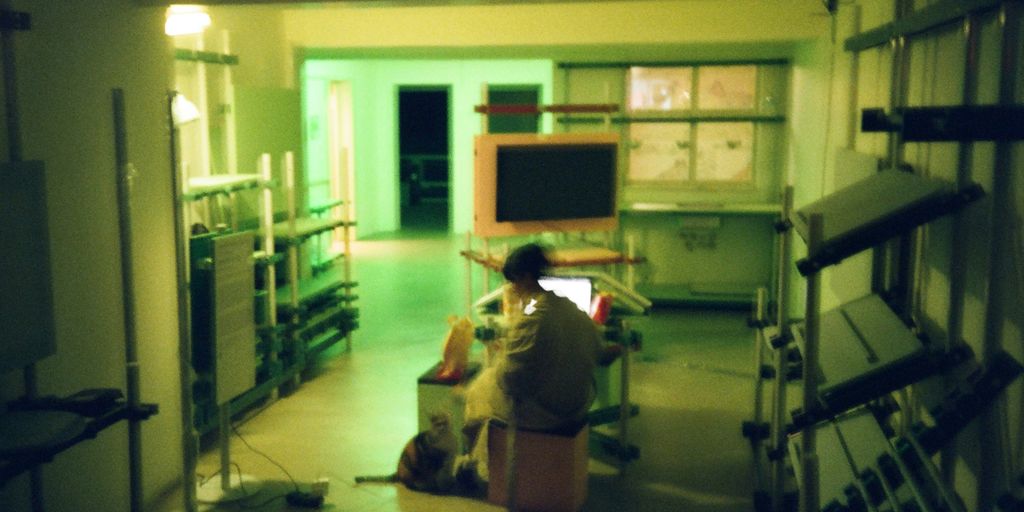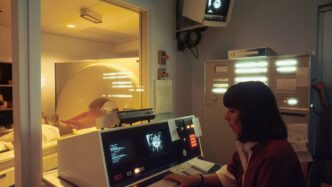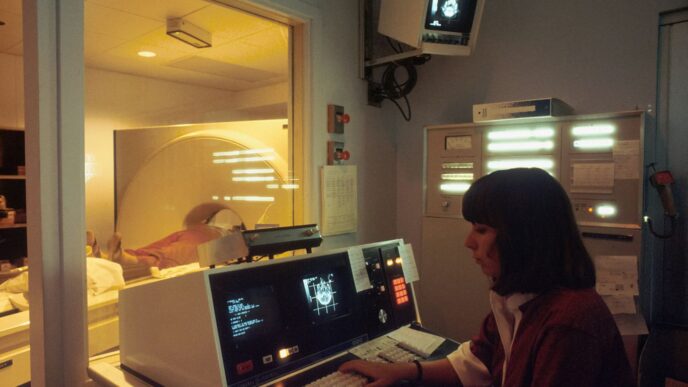Hospitals are busy places, and keeping everyone safe is a big job. We’re talking about patients, the people who work there, and all the important medical stuff. It’s not just about stopping bad guys; it’s also about keeping private patient information private. This article is going to look at how good access control in hospitals helps with all of that. We’ll check out some smart ways to make hospitals more secure, what new tech is out there, and how hospitals deal with the daily challenges of staying safe.
Key Takeaways
- Hospitals face tough challenges like protecting patient information, keeping people safe, following rules, stopping germs from spreading, and dealing with tight budgets.
- Access control systems in hospitals help decide who can go where, what they can use, and what information they can see.
- These systems have special features to guard patient data, like needing more than one way to log in, and they keep detailed records for checking up on things.
- New ideas like mobile passes and touchless entry are helping hospitals stay clean and make it easier for temporary staff to get around.
- Putting all security systems together, like physical access, alarms, and visitor tracking, makes hospitals safer and more efficient.
The Importance of Robust Access Control in Hospitals
Hospitals are complex environments, and keeping them secure is a big job. It’s not just about stopping people from wandering in; it’s about protecting patients, data, and staff. Think of it like this: a hospital is a city within a city, and access control is the gatekeeper.
Protecting Patient Safety and Well-being
Patient safety is the top priority, and access control plays a huge role. Imagine someone unauthorized gaining access to a patient’s room or a treatment area. That’s a risk we can’t afford to take. Access control systems ensure only authorized personnel, like doctors and nurses, can get into sensitive areas. This protects patients from potential harm and ensures they receive care from qualified individuals. It’s about creating a safe and secure environment where patients can focus on getting better. For example, hospital security systems can restrict access to patient records.
Securing Sensitive Patient Data
Patient data is incredibly sensitive, and hospitals have a responsibility to protect it. Data breaches can have serious consequences, both for the hospital and for the patients whose information is compromised. Access control helps prevent unauthorized access to electronic health records (EHRs) and other confidential information. It’s not just about physical security; it’s about digital security too. Think of it as a layered approach, with different levels of security depending on the sensitivity of the data. Multi-factor authentication and strong password policies are key components of a robust data security strategy. It’s a complex issue, but it’s one that hospitals must take seriously. Here’s a quick look at the potential impact of data breaches:
- Financial losses due to fines and lawsuits
- Reputational damage
- Loss of patient trust
Safeguarding Hospital Staff and Assets
It’s easy to focus on patients, but hospital staff also need to be protected. Hospitals can be stressful environments, and sometimes, unfortunately, violence can occur. Access control can help prevent unauthorized individuals from entering restricted areas, protecting staff from potential threats. It also helps prevent theft and vandalism of valuable medical equipment and supplies. It’s about creating a safe working environment for everyone. Plus, access control measures like electronic locks and surveillance cameras can deter criminal activity. It’s a win-win situation for everyone involved.
Key Measures for Enhancing Hospital Security

It’s not enough to just want a secure hospital; you have to actively build one. Here’s how to take real steps toward better security.
Implementing Advanced Access Control Systems
Advanced access control systems are the cornerstone of modern hospital security. Think beyond simple keycards. We’re talking about biometrics, smart cards, and systems that integrate with real-time monitoring. This allows hospitals to grant or revoke access based on individual credentials. For example, access control turnstiles can be used to track staff attendance.
Comprehensive Visitor Management Protocols
Managing visitors is a big deal. You need to know who’s in your building, when they arrived, and where they’re going. A good visitor management system includes:
- Issuing visitor badges that clearly identify guests.
- Verifying identities upon arrival, maybe even running background checks.
- Recording entry and exit times automatically.
- Restricting visitor access to specific areas only.
This not only helps with security but also provides data for contact tracing if needed.
Strategic Surveillance and Monitoring Integration
Cameras alone aren’t enough. You need a system that integrates surveillance with other security measures. This means:
- Strategically placed cameras covering key areas.
- Motion sensors and alarms to detect unusual activity.
- Integration with access control systems so that security personnel are alerted when unauthorized access attempts occur.
Video surveillance can deter potential threats and provide evidence if something does happen. A centralized platform, like the one at the Security Centre, can unify physical access, alarms, video, and visitor management across hospitals.
Addressing Key Security Challenges in Healthcare
Hospitals face a unique set of security challenges, balancing open access for care with the need to protect patients, staff, and sensitive data. It’s a tough balancing act, and getting it wrong can have serious consequences. Let’s look at some of the biggest hurdles.
Navigating Data Security and Compliance
Data breaches are a major concern in healthcare. Protecting patient data isn’t just about avoiding fines; it’s about maintaining trust. We’re talking about things like electronic health records, billing information, and even research data. The rise in cyberattacks makes this even harder. Plus, there’s a ton of regulations to keep up with, like HIPAA, which adds another layer of complexity. It’s not enough to just have security measures in place; you have to prove they’re working. Here are some key areas to consider:
- Regular security audits and risk assessments.
- Employee training on data privacy and security protocols.
- Strong encryption and access controls for sensitive data.
Managing Physical Security and Infection Control
Physical security is more than just keeping intruders out. It’s also about managing the flow of people within the hospital and preventing the spread of infection. Think about it: hospitals are high-traffic areas with lots of visitors, staff, and patients moving around. Balancing security with easy access is tricky. And with the ever-present risk of infection, contactless access methods are becoming increasingly important. Here’s a breakdown:
- Implementing visitor management systems to track who’s on-site.
- Using access control systems to restrict access to sensitive areas.
- Enhancing cleaning and disinfection protocols, especially for high-touch surfaces.
Balancing Security with Budget Constraints
Let’s be real: security costs money, and hospitals are often working with tight budgets. Finding cost-effective solutions that don’t compromise security is a constant challenge. It’s about prioritizing risks and finding the right balance between security measures and operational efficiency. Sometimes, it means getting creative and finding innovative ways to improve patient outcomes without breaking the bank. Consider these points:
- Prioritizing security investments based on risk assessments.
- Exploring cost-effective security technologies and solutions.
- Seeking grants and funding opportunities to support security initiatives.
Leveraging Technology for Enhanced Hospital Access Control

Technology is changing how hospitals handle security. It’s not just about keeping people out; it’s about making things easier and safer for everyone inside. Let’s look at some ways tech is helping.
The Role of Biometric Authentication
Biometrics are a big deal. Using things like fingerprint scanners or facial recognition adds a strong layer of security. It’s harder to fake a fingerprint than a key card. Plus, it can speed up entry for staff. Think about it: no more fumbling for badges when you’re rushing to an emergency. It’s also useful for tracking who goes where, which is important for compliance. Biometric systems can be expensive to set up, but the added security and efficiency are often worth it.
Implementing Predictive Analytics for Threat Detection
Predictive analytics is like having a crystal ball for security. These systems use data to spot patterns and predict potential threats. For example, if someone tries to access a restricted area at an unusual time, the system can flag it. It’s not perfect, but it can give security teams a heads-up. It’s all about using data to stay one step ahead. This can be integrated with ICT’s advanced solutions for a more robust security posture.
Adopting a Zero Trust Security Model
The zero trust model is a big shift in how we think about security. Instead of trusting everyone inside the network, it assumes no one is trustworthy. This means verifying everyone, every time they try to access something. It might sound like a hassle, but it can greatly reduce the risk of breaches. Think of it as double-checking everything, all the time. It’s a more secure way to operate, especially with so many devices connected to hospital networks. It also helps with access control for hospitals by ensuring only authorized personnel gain entry.
Optimizing Data Protection and Regulatory Compliance
Streamlining Operational Efficiency
Okay, so picture this: hospitals are busy. Really busy. And all that paperwork? All those manual checks? It eats up time. Time that doctors and nurses could be spending, you know, actually helping people. Access control for hospitals can automate entry, keep track of visitors, and handle credentials for everyone from staff to contractors. This automation cuts down on the administrative burden, freeing up hospital staff to focus on what they do best: patient care. It’s about making things run smoother, so everyone can focus on the important stuff.
Maximizing Return on Investment and Risk Mitigation
Think of it this way: a security breach isn’t just a headache; it’s a potential financial disaster. Between fines, lawsuits, and the hit to your reputation, the costs can be huge. Healthcare security systems help prevent unauthorized access and protect patient data, which can prevent those costly incidents. It’s like an insurance policy, but instead of just covering the damage, it helps prevent the damage from happening in the first place. By investing in robust security, hospitals can avoid those financial pitfalls and protect their bottom line. Plus, with the patient safety and risk management software market growing, there are more options than ever to find a system that fits your needs.
Ensuring Accountability Through Comprehensive Auditing
Accountability is key, especially in healthcare. You need to know who accessed what, when, and why. Comprehensive audit and monitoring provide detailed logs of all physical and digital access attempts. This level of tracking is invaluable for accountability, compliance, quick incident investigation, and spotting ways to improve workflows. It’s about having a clear record of everything that happens, so you can identify potential problems and address them before they become major issues. Think of it as a security camera for your data, always watching and recording, so you can rest easy knowing everything is accounted for.
The Impact of Mobile Credentials and Contactless Access
Minimizing Infection Transmission Risks
Okay, so think about it: hospitals are germ central, right? Traditional access methods, like keypads or even swiping cards, mean everyone’s touching the same surfaces. Mobile credentials and contactless access change that game completely. Instead of touching a potentially contaminated surface, staff and visitors can use their smartphones or key fobs. This is a big deal for cutting down on the spread of infections. It’s just a smarter, cleaner way to get around the hospital. This is a key part of access control for hospitals.
Streamlining Access for Temporary Personnel
Hospitals always have temporary staff coming and going – visiting specialists, contractors, you name it. Getting them secure access quickly used to be a headache. Paper passes? Easy to lose or fake. Re-keying locks? Time-consuming and expensive. Mobile credentials make it way easier. You can grant temporary access instantly, and revoke it just as fast when they’re done. No more fumbling with keys or worrying about unauthorized access after they leave. It’s all managed digitally, which is way more efficient.
Enhancing User Convenience and Efficiency
Let’s be real, nobody likes carrying around a bunch of different cards or keys. Mobile credentials let people use their smartphones, which they already have on them all the time. It’s just more convenient. Plus, it can speed things up. No more digging through your bag to find the right card – just tap your phone and you’re in. This can really add up in a busy hospital environment, saving time and making everyone’s lives a little easier. It also helps with secure access for staff.
Integrated Solutions for Comprehensive Hospital Security
Hospitals are complex environments, balancing patient care with stringent security needs. It’s not just about keeping people out; it’s about managing who has access to what, when, and why. This section explores how to bring all the security pieces together for a truly comprehensive approach.
Centralized Security Management Platforms
A centralized platform is key to managing all aspects of hospital security from a single point. Think of it as the mission control for your entire security apparatus. Instead of juggling multiple systems for access control, video surveillance, and medical alarm systems, a unified platform brings everything under one roof. This allows for real-time monitoring, faster incident response, and better overall situational awareness. It also simplifies administration, making it easier to manage user permissions, generate reports, and maintain compliance. It’s about turning security data into actionable intelligence.
Seamless System Integration and Open Architecture
Integration is the name of the game. Your access control system shouldn’t exist in a silo. It needs to talk to other systems, like HR, patient management, and even building automation. An open architecture makes this possible. Imagine a scenario where a new employee is automatically granted access to the appropriate areas as soon as they’re entered into the HR system. Or, consider how a hospital access control systems can trigger a lockdown in response to an alarm from the building management system. This level of integration streamlines operations, reduces manual effort, and improves security posture.
Dynamic Role-Based Access and Zone Control
Not everyone needs access to every area of the hospital. That’s where role-based access control (RBAC) comes in. RBAC allows you to define access permissions based on a person’s role within the organization. For example, a nurse might have access to patient rooms and medication dispensing areas, while a maintenance worker might only have access to utility rooms and common areas. Zone control takes this a step further, allowing you to restrict access to specific zones within the hospital, such as operating rooms or pharmacies. This ensures that only authorized personnel can enter sensitive areas, reducing the risk of theft, tampering, or other security breaches. It’s about creating a layered security approach that adapts to the specific needs of each area and each individual.
Conclusion
So, making hospitals safer with good access control is really important for patients, staff, and all the private information. When hospitals use smart access systems, try out new tech, deal with problems head-on, and look at what’s coming next, they can build a secure and strong place. This helps with patient care, keeps things private, and builds trust. It’s a good idea to always check how things are working, look for risks, and work with security pros. That’s how hospitals can keep their security systems working well as things change.
Frequently Asked Questions
Why is it a big deal for hospitals to have good access control?
Access control in hospitals is super important because it helps keep everyone safe. It makes sure that only the right people can go into certain areas, which protects patients from harm, keeps their private information secure, and stops bad things from happening to hospital staff and valuable equipment.
What are some simple ways hospitals can make their security stronger?
Hospitals can make their security much better by using smart systems like electronic key cards or fingerprint scanners. They also need to keep a close eye on who comes in and out, like visitors, and use cameras to watch over important spots. These steps help prevent problems before they start.
What are the main tough parts about keeping hospitals safe?
Hospitals face tough challenges, like keeping patient data super private and safe from computer hackers, and also making sure the building itself is secure while stopping germs from spreading. Plus, they have to do all this without spending too much money. It’s a tricky balancing act!
How does new technology help make hospital access control better?
New technologies are a huge help! Things like using your fingerprint or face to get into a room (biometrics) make it harder for the wrong people to get in. Hospitals can also use computer programs to guess where problems might happen next, and a ‘zero trust’ idea means they don’t trust anyone or anything until it’s proven safe.
How does good access control help protect patient information and follow rules?
Good access control helps hospitals follow all the rules about keeping patient information private, like HIPAA. It also makes things run smoother, saves money by preventing issues, and helps the hospital show that they are being responsible with everyone’s data.
What’s cool about using phones or no-touch ways to get into hospital areas?
Using things like your phone to open doors, or doors that open without you touching them, is great because it means fewer germs spread. It also makes it easier for temporary workers to get where they need to go quickly, and generally makes things more convenient for everyone.














